|
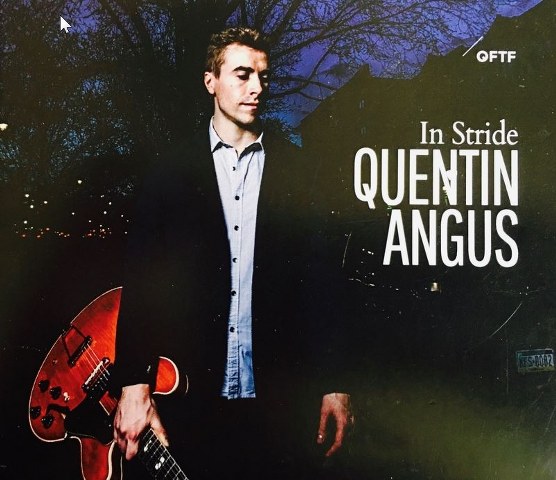 | Quentin Angus - In Stride (QFTF031)
|
Keeping ‘in stride’ on his journey from Eden Valley, South Australia, guitarist/composer Quentin Angus hasn’t batted an eyelid since arriving in the world’s Mecca for jazz in 2010. Angus is an Associate Professor of Music for the City University of New York, teaches several courses at the Borough of Manhattan Community College and holds a PhD (Phrasing and Polyrhythm in Contemporary Jazz Guitar), plus a Master of Music Degree in Jazz Performance.He has also received national and international recognition for both his guitar playing and composing. On this latest outing Angus leads a stellar trio featuring fellow New Yorker Ari Hoenig on drums and the Australian bassist Sam Anning. With tunes from Charlie Parker,Wes Montgomery, Oasis and the New York rock band Goo Goo Dolls, plus four of his original compositions, Angus excels technically and creatively with a fine sense of groove, forming a unit which is tight and funky with members extremely comfortable in each other’s company.Stand out tracks include Wonderwall and One For Bernie but no matter how technical his lines might get, Angus executes them on these and the rest with smooth, authoritative precision.Skilful recording, mixing and mastering have all contributed immensely to the effect of this fine collection of original compositions and covers played by artists who possess great integrity and understanding of the music and their instruments
    
|
Barry O’Sullivan
|
| Back to Index |
|
 | Adrian Lim-Klumpes - Yield [Preludes and Fugues for piano] (OCD036)
|
Yield is a collection of works showcasing Adrian Lim Klumpes unique ability to develop improvised ideas into fully rounded and complex works.The album is a selection of performances captured in one six hour session on a Steinway piano and is awash with his signature blending of minimalism lyrical piano jazz harmony with sampling and effects to create textures that shift in mood from track to track.There are obvious influences from Bach’s piano work The Well Tempered Clavier with its arrangement into paired preludes and fugues which Bach composed …“ for the profit and use of musical youth desirous of learning, and especially for the pastime of those already skilled in this study.” Lim-Klumpes certainly fills this mould.The album speaks to the classical piano tradition but Lim-Klumpes makes clear that he is using the original meaning of ‘fugare’ here, that is, ‘the chase,’ where one line pursues another.Yet equally we hear influences from modern pianists Phillip Glass and Chris Abrahams.The tracks were created in pairs designed for the listener to hear corresponding echoes between pieces being led through a range of emotions from feelings of violence, loneliness and pain to those of peace, warmth, tenderness and fragility revealing new colours and dimensions with each listen.Listeners will be enchanted by their transportation into Lim-Klumpes evocative aural world.Highly recommended for lovers of digitally manipulated piano harmonies executed creatively
    
|
Barry O’Sullivan
|
| Back to Index |
|
 | Tony Barnard and Casey Golden - Inventions (BSP 3504)
|
Two generations of the Barnard jazz dynasty have collaborated to create a stunning jewel of a recording.Now based in London uncle Tony Barnard and nephew Casey Golden deliver modern original compositions and improvisations that fall somewhere between jazz, classical, world and folk music.Harp guitarist Tony and pianist Casey are both classically trained musicians but perform separately at Ronnie Scott’s and other top jazz venues.It’s such a pleasure to listen to a guitar being nurtured as the beautiful classic musical instrument that it is into a jazz idiom and a Steinway Grand being caressed there also in the unique technique employed by Golden. Soft and intelligent guitar progressions lead into the scintillating chops of Golden.Throughout the majority of Barnard and Golden’s Inventions their compositions and arrangements are precise and well designed.From the delicate This Is All There Is,Where The Clouds Go, First Place and Rhapsodic to the jazz inspired Sprawler and First Place both artists display a fine and nuanced touch alluded to above.In an era where shredding and playingasfastasyoupossiblycan for no apparent reason have become a norm, it is a pleasure to listen to a harp guitar being nurtured as the beautiful musical instrument that it is. The pacing and tempo comfortably allows time to breathe and absorb the subtleties and distinctions that are well crafted in this stellar debut
    
|
Barry O’Sullivan
|
| Back to Index |
|
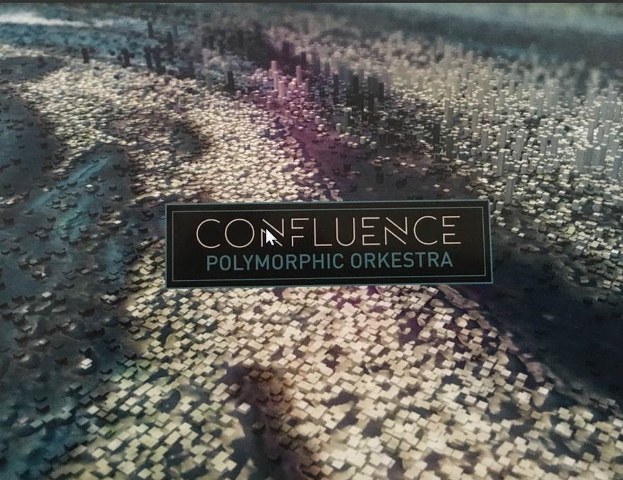 | Polymorphic Orkestra - Confluence (Bamboozle Music 012)
|
Confluence is one of those recordings that has the power to move and entertain on many levels and deliver to its listener a wealth of substance.
The creative combo of musicians on The Polymorphic Orkestra’s latest release delivers two extended tracks of experimental tonal nuances, sonorities, and effects which demonstrate their expert understanding of how and where to implement these properties in each composition to add to its coherence.
Played on vibraphone, trumpet, fluegelhorn and drums, cushioned with samples and FX, the two compositions on this release are superb examples of the direction that modern jazz improvisation is heading in this millennium. This trio of experimental musicians is surely the avant-garde.
Although at times the music is lacking in improvisational rigour, Confluence is a captivating and charismatic recording that enchants with its hypnotic dreamlike lyricism. Lee McIver demonstrates with his solid technique, and unique sound and style, that he can successfully cross genres and yet also manage to remain refreshingly original. He is the lynchpin, on muted trumpet and flugelhorn, that delivers the combined streams of the two tracks to form the conjunction with the other players - the cornerstone of this project. McIver’s smooth trumpet phrasing leads the way for the vibraphone and mallet kit (Ed Goyer), while drums, percussion and samples (Ed Rodrigues) keep the rhythm ebbing and flowing, delivering vibrant colour to the mix. Together this trio creates a soundscape which is full, rich in detail and enthralling throughout.
    
|
Barry O’Sullivan
|
| Back to Index |
|
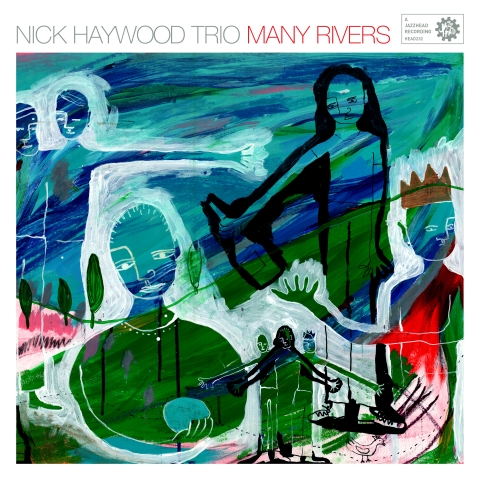 | Nick Haywood Trio - Many Rivers (JazzHead 232)
|
The art of the piano trio is difficult to master yet three players trying to find a language together have given it a unique expression. Nick Haywood Trio’s latest release, taking simple themes and allowing complexity to unfold as a collective process, is the precise application of a creative skill. Featured are some original tunes alongside some unexpected selections, Stevie Nicks’ Landslide,The Moody Blues’ Nights In White Satin, and Farewell Dearest Nancy, a Scottish traditional tune that rarely gets an outing on a jazz recording. Added to these are two improvisations by the trio,Wiggy Blues and Fox Hat, which explore uncharted territories. Certainly, the near symbiotic relationship that this trio has built up over time makes the freewheeling feeling jazz come ever so easy. The country/gospel feel of Jimmy Cliffs’ Many Rivers To Cross, a stirring ballad of hope and aspirations which is executed superbly by Colin Hopkins on piano, is a highlight of the album. Song of The Survivor, an original composition also from Hopkins, is a standout.This album, created by three masters of the form, is a shining example of the superb and world class talent we have in this country
    
|
Barry O’Sullivan
|
| Back to Index |
|
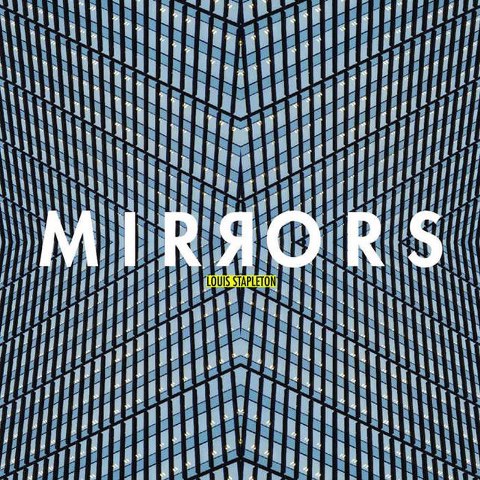 | Mirrors - Louis Stapleton (https://louisstapleton.bandcamp.com/album/mirrors)
|
Louis Stapleton is an award winning (Sparda Jazz Award,Young Munich Jazz Prize) gifted Australian pianist, composer and arranger who studied under the German heavyweight jazz musicians Hubert Nuss and Florian Ross, and this recording was funded with prize money from the above awards. Stapleton’s music contains influences from his hero jazz artists, John Taylor, Aaron Parks and Alan Broadbent, and is emblazoned with his tight, clean and virtuosic pianism.
Composed during his time in Germany, with a definite nod to his previous advanced classical piano studies, Stapleton is accompanied on this outing by some extremely talented musicians from Cologne, bandleaders in their own right: Oliver Lutz on bass, Fabian Arends on drumset and the prodigious Philipp Braemswig on four of the tracks on guitar. A more simpatico quartet of musical explorers is difficult to imagine; and evident throughout is Stapleton’s dedication to serious musical discipline. On the track 13th Floor an up-tempo Stapleton establishes the active conversational sound of the trio with the guitarist, the pianist often writing long lines which the other players follow while weaving in and out.The standout ballads Rialto and Departures are compositional gems, with the improvisation sufficiently songlike, melting into the melody, and showcasing Stapleton’s high distinction skills
The trio and guest guitarist deliver the sound of modern creative music, attaining a beauty and personality too rarely heard in contemporary jazz, with impressive playing and solos from Lutz throughout and the impeccable restraint and technique of Arends on drums
    
|
Barry O’Sullivan
|
| Back to Index |
|
 | Andrew Butt Trio - Blueberry Ash (Independent)
|
Blueberry Ash is predominantly an album of original compositions by saxophonist Andrew Butt. Pleasingly it contains one added gem - the tune Love Song From Apache written by David Raskin and Johnny Mercer, a rarely recorded tune that was a favourite of the great Coleman Hawkins, whose rendition on his album Today and Now is a true masterpiece in jazz history, and may have inspired Andrew Butt to want to include it here. He certainly does it justice; and so he should. Bris-bane based Butt is a Churchill Fellow, an award winning leader, and a saxophonist who has per-formed as a jazz soloist with the Queensland Symphony Orchestra. His compositions have been per-formed and recorded by a variety of artists including his own musical groups.
On this outing he is accompanied by the stylish guitar work of Toby Wren, whose solo on I love Boiled Eggs is a standout, and the brilliant pianism and extended soloing of Kellee Green on all tracks, where her flowing lines and colourful chords seem to be as natural as breathing.The trio is augmented by a variety of bassists, drummers and horn players.These musicians blend into the mix extremely well and their contributions are first rate alongside the saxophone of Butt as he cruises through this horn fest with enthusiasm, faultless technique and impeccable feels. This is an uplifting and frankly heartfelt reflection of the time Butt has spent absorbing both the past and future of jazz, while sporting a wonderful collection of tunes
   
|
Barry O’Sullivan
|
| Back to Index |
|
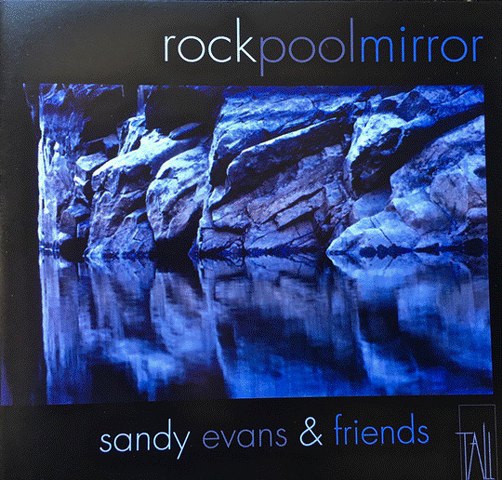 | Sandy Evans and Friends - Rock Pool Mirror (Tall Poppies TP 244)
|
Composed and led by saxophonist /composer Sandy Evans (OAM) this album of ambient landscapes is a musical response to photographer Belinda Webster’s Shoalhaven Gorge series of photographic images which traverse the tranquility of rock formations reflected in still waters at dawn, to the darkness of chasms and rock formations in an area of unique and pristine natural Australian bushland.The music is a series of duets with Evans by numerous musical contributors interspersed with tracks featuring Alon Ilsar’s sonic wizardry.These dynamic instrumental pieces stay mostly rooted in the ambient mode, but occasionally soar and fly beyond, demonstrating a dizzying range of technique and tone complemented by Satsuki Odamura’s blissfully evocative koto playing,Bobby Singh’s cheeky tabla with his supple hand percussion making the disc's rhythms feel organic, Adrain Sherriff’s sometimes bold and brassy bass trombone and the hauntingly faultlessly earthy double bass playing of Steve Elphick. The group’s interplay in duets is as bright and smart as the leaders’ compositions. Some are simple frameworks for coasting and trading fun solos, though the more successful moments lie in the surprising juxtapositions of instruments.Stand out tracks include the evocative and redolent Lake Yarrunga Colours featuring the mastery of Satsuki Odamura’s koto and the prowess of Evans’ soprano alongside Rock Warrior and Lake Yarrunga Morning Mist featuring the deftly skilful tabla playing of Bobby Singh and the inventiveness of Evans’ tenor and soprano saxophones respectively. This would have to be indeed one of the most intriguing contemporary musical releases in Australia so far this century
    
|
Barry O’Sullivan
|
| Back to Index |
|
 | Ephemera - Orbits and Riffs (www.ephemeraensemble.com)
|
Here is an interstellar space where the subliminal meets a chamber-like, minimalist Sun Ra in a production of planetary proportions over two CD’s and seventeen original and improvised pieces. The concept was conceived by flautist, pianist and composer Keyna Wilkins and her fascination with the universe and all its elements. Underpinned by the monstrous arco bass of Elsen Price whose sound seems to emerge from infinite darkness, Wilkins has followed her abiding interest and created a soundtrack to the stars. Ethereal jazz trumpeter Will Gilbert completes the triangle with a sound full of tonal colours and intuitive empathy. Wilkins’s flute is further inspired by the harmonic possibilities of recordings of electromagnetic waves from planets and stars sourced from astronomer Professor Paul Francis that take you on a meditative journey of weightlessness and peace. Full of sonic textures and infinite possibility, this is one of the true concept albums of recent years
   
|
Peter Wockner
|
| Back to Index |
|
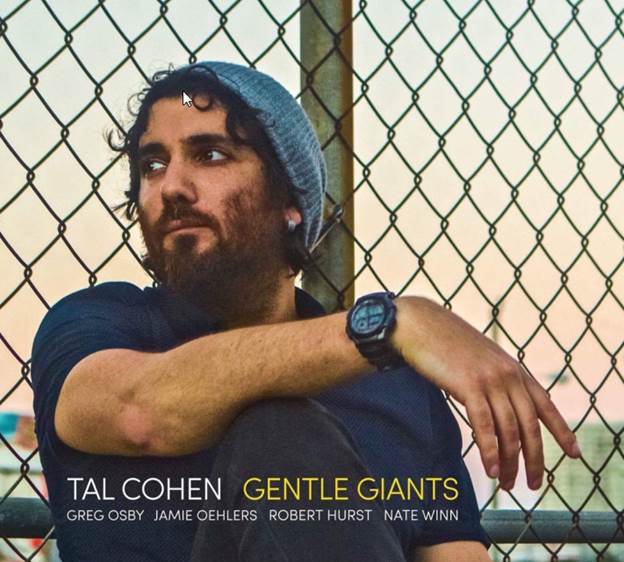 | Tal Cohen - Gentle Giants (Independent 67890 5)
|
Following on from his 2015 Freedman Fellowship win in Australia, pianist, composer and arranger Tal Cohen has recorded two albums, one a duet with the Perth-based saxophonist Jamie Oehlers, Innocent Dreamer, and another duet, Intertwined, with the USA vocalist Danielle Wertz with whom he studied at the University of Miami while completing his Master's degree there. This latest offering, recorded in the USA, features both New York heavyweight Greg Osby on alto saxophone and Perth-based Jamie Oehlers on tenor saxophone. Both make good use of extended techniques and contrastive dynamics throughout the album and Robert Hurst on bass and Nate Winn on drums play flawlessly also. On the tracks The Gentle Giants, and Lo Haya:Part1, Cohen continues to prove himself as a masterful player and conceptualist whose use of space and deft light and shade, highlights the theory that the energetic sound-scapes heard on Gavetch and Ducks are not always necessary to make a huge impact on the listener. His music skillfully engages improvisational moods from the frenetic to the soothingly gentle. At all times its Cohen's jazz mastery that permeates throughout the arrangements, and the album's success rests, in some measure, on his artistry in that realm, which for the most part is well above par and reflects his ongoing commitment to tradition and his continuous reach for originality. Overall the album is an interesting and very successful step forward for one of contemporary jazz's most exciting, emerging composers and improvisers.
   
|
Barry O’Sullivan
|
| Back to Index |
|
 | Jeremy Rose - Within and Without (Earshift Music EAR 018)
|
One defining characteristic integral to the success of any recording is the cast of players one surrounds themselves with. On that score the award winning musician/saxophonist/composer Jeremy Rose has chosen wisely on his newly released album of music Within and Without
The music featured on the album was written at a time of great change in Rose’s life and is inspired by travel, personal relationships and a newfound creative inspiration that traverses variances in mood and tempos appropriately accommodating its inspirational sources - the Atlas Mountains of Morocco, the Islands of Indonesia and even the outback of Australia on Flash Jack From Gundagai. Throughout the album, Rose exquisitely displays his musical prowess on instruments of choice, alto sax, and bass clarinet, on eight distinctively original compositions alongside his longtime collaborator, pianist Jackson Harrison, who contributes one outstanding composition and playing gracefully and sublimely on all tracks of the album. Alongside them both is the American Kurt Rosenwinkel, now a Berlin resident where the album was recorded and highly regarded as one of the jazz world’s most acclaimed and influential guitarists. Rosenwinkel uses a wide variety of effects units, each with a specific function and effect on the guitar's sound throughout all of the compositions which are complimented by a terrific rhythm section, bassist Andreas Lang from Denmark and drummer Tobias Backhaus also from Berlin. On Zombie and Second Chance, Rosenwinkel lustrously shines on his guitar alongside Rose’s Alto, with the rhythm section especially on track on From The River to You clearly demonstrating to the listener Jackson Harrison's prowess in pianism and composition. Rose’s deft ability on alto saxophone and bass clarinet permeate throughout the whole album weaving all the musicians performances into a magic web of harmony and creativity, a total kaleidoscopic affair, full of contrasting moods and tonal colours.
    
|
Barry O’Sullivan
|
| Back to Index |
|
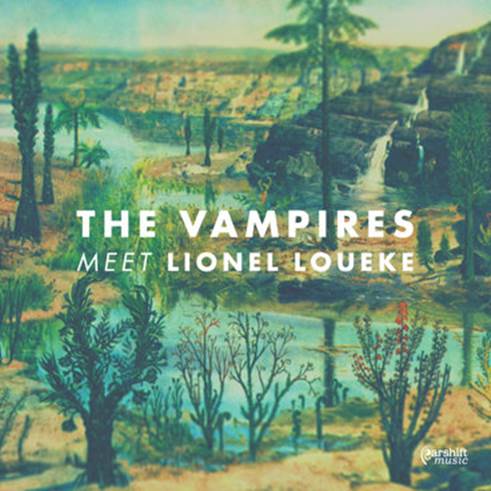 | The Vampires Meet Lionel Loueke - Earshift Music (Ear 017)
|
Celebrating ten years as a band The Vampires have released their fifth recording in collaboration with the acclaimed Benin-born Blue Note recording artist guitarist Lionel Loueke. On this outing, they have added new musical influences of Ethio-jazz to dub, Afro -Cuban to Indonesian Gamelan to their already successful repertoire style of reggae inspired jazz resulting in a truly expansive album that justly serves the various creative forces within the band and the producer -musician/composer Lloyd Swanton from the award winning ambient ensemble The Necks. The line-up of players has changed with the addition of Danny Fisher on several tracks in the drum chair and a new double bassist Jonothan Zwartz on all.The horn players are the same, Nick Garbett on trumpet and Jeremy Rose on alto and tenor sax as well as bass clarinet, with the other original Vampire drummer Alex Masso returning for two of the ten tracks on drums and percussion.Loueke's electric and acoustic contributions, as well as his vocals, are at the core of it all. His creativity overflows in every track and you can easily feel his passion to his own music. He is also flexible with the band, brewing unique flavors with his razor-sharp guitar skills generating a sound that is at all times relaxing and comfortable to the senses.This is a highly successful first-time collaboration featuring standout tracks Green, Green, Green and the very laid back Ubud Bubble with composer Rose's soulful playing on bass clarinet being a major highlight of the musical invention
   
|
Barry O’Sullivan
|
| Back to Index |
|
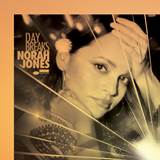 | Norah Jones - Day Breaks (BLUE NOTE)
|
Sultry vocalist and pianist Norah Jones latest recording Day Breaks is cleverly disguised as a singer-songwriter album with roots in pop and jazz, divided between originals and sharply selected covers.It’s clever because her previous recording dates have deliberately strayed from these roots but now she has dangled the musical lure out to welcome back any disillusioned fans that may have become disloyal from those previous musical meanderings to deliver an album of depth and resonance.There’s a bluesy cover of Neil Young's Don't Be Denied -a real highlight-that winds up evoking her first big hit Come Away with Me. Ms Jones then follows that up with the dense nocturnal rhythms of Day Breaks playing piano with a fluid keyboard touch alongside Wayne Shorter on soprano sax and members his trio,Brian Blade( drums) and John Patitucci (bass).They are outstanding on the tracks - Horace Silver's Peace and Duke Ellington's African Flower, and it’s on these that her jazz roots flourish and come to fruition. Throughout the album she sings with more depth and resonance than ever before.Such a sense of quiet adventure gives the record depth but what gives it resonance are the exquisitely sculpted original Jones’ songs that feel as elegant as Songbook standards. Day Breaks is a testament to Norah Jones’ ever-evolving musicianship
   
|
Barry O’Sullivan
|
| Back to Index |
|
 | Diana Krall - Turn Up The Quiet (Decca / Verve 5735217)
|
This latest release album from the pianist/singer finds her returning to well-known standards from the Great American Songbook. Reuniting with producer Tommy LiPuma for the first time since 2009's Bossa Nova inspired Quiet Nights, Ms. Krall works with a trio of lineups on Turn Up the Quiet, alternating between a trio, quartet, and a quintet. The album isn't divided into triads but rather gently shifts between these bands, a move that's sometimes imperceptible because the focus is firmly on Ms. Krall, the pianist. Her voice often operates at a managed hushed whisper, a decision that suits this collection of romantic and dreamy material.It also underscores the importance of the record's title and that emphasizes her lithe pianism along with the solo spotlights from her featured musicians, guitarists Russell Malone, Anthony Wilson, and Marc Ribot, along with supple playing by bassists Christian McBride, Tony Garnier, and Anthony Wilson.Violinist Stuart Duncan, in particular, stuns with his solos on I’ll See You In My Dreams and Moonglow. The vocalist keeps things smoky and subdued throughout the recording, a method she seems to have mastered.This is a recording for the wee small hours of the morning or for that special dinner party gathering. It won’t offend or intrude and the end result is so elegant, it seems effortless
   
|
Barry O’Sullivan
|
| Back to Index |
|
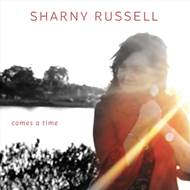 | Sharny Russell - Comes a Time (Treasure House Music)
|
Sharny Russell is sadly under-recorded but she is the real deal. Russell’s timbre sits in a lush flower bed once occupied by Blossom Dearie and even another Qld singer Ingrid James. Indeed Blossom Dearie’s lineage is evident in Russell’s approach and her veracious but clever lyrics, however Russell is as original as they come and tries to be no-one but Sharny Russell. The album is abundant in melody and Russell has assembled a stellar group of Sydney musicians such as a swinging Brendan Clarke, a soulful Paul Cutlan and a tight Gordon Rytmeister. Among the thirteen tracks are four jazz standards but it’s the originals that maintain the interest. Russell accompanies herself on piano on ten tracks but it’s her clarity of phrasing even at fast tempos which feeds that curiosity. ‘Colour Me’ is one of those simple and catchy hooks and Russell’s sincerity shines through even adding credibility to a ‘do da do doo’ ending. ‘Never Goes Out of Style’ gives way to a little funky twelve bar blues and gives Cutlan another passionate exchange on tenor saxophone. One of the standards ‘I’ve Grown Accustomed to his Face’ allows the listener to get intimate with the tender voice then the curve ball surprises when it breaks into a samba against a haunting oboe solo from David Nuttall. This album satisfies on many levels
   
|
Peter Wockner
|
| Back to Index |
|
 | Hinterlandt - Ode to Doubt (hinterlandt.org)
|
Hinterlandt is the ongoing project of the German born, Sydney based composer, arranger and musician Jochen Gutsch. Gutsch cut his teeth on classical music in Europe in the 1970’s but soon became interested in the guitar and alternative rock music. He moved to Australia in 2000 and his music began to develop into highly arranged contemporary chamber music. This is his follow up album to ‘Ensemble’ in 2016 and is a concept based the positive aspects of doubt. Lyrics on the three vocal pieces such as ‘Embrace the insecurity’ and ‘You’re almost halfway there’ support the four instrumental pieces which include violin, cello, xylophone while Gutsch also plays trumpet, piano and glockenspiel. ‘Break a Leg’ is one of those instrumentals with an arrangement full of good humour with unpredictable twists, turns and colourful shapes. The music can become incredibly simple sometimes with single note dialogue between xylophone and cello or xylophone and string section but this only adds to the ornate textures of the broader aesthetic. ‘Draw a Line’ fuses soft rock folk elements with chamber music using the unison vocals of Brian Campeau and Nicole Smede. Packaged in plain recycled cardboard, this music has all the hallmarks of the artist’s honesty and the acceptance of one’s fate as a creative artist.
   
|
Peter Wockner
|
| Back to Index |
|
 | The Microscopic Septet - Been Up So Long It Looks Like Down To Me: The Micros Play The Blues (CUNIEFORM RECORDS Rune 425)
|
This latest recording from The Microscopic Septet is an investigation of the blues form containing a variety of different takes on the jazz-blues format from blowing tunes to highly arranged orchestral pieces, a blues march, an homage to Ellingtonia, a reharmonized blues version of Silent Night and a couple of Bop tunes thrown in.The band's prolific composers and co-leaders saxophonist Phillip Johnston and pianist Joel Forester come together with drummer Richard Dworkin, bassist Dave Hofstra, saxophonists Dave Sewelson, Mike Hashim and Don Davis to stretch out their idiosyncratic soloistic styles.The only cover and the only vocal on the album is I've Got A Right To Cry written and recorded by the great Joe Liggins an American jazz and blues pianist and vocalist who led Joe Liggins and his Honeydrippers in the 1940s and 1950s.It’s a tune the band has had in its repertoire since inception and although it's not technically a blues number it seems to fit into this album quite snugly as a showpiece.Stand out tracks come with a hint of Thelonius Monk's influence from the band on Quizzical and 12 Angry Birds homaging the early works of Duke Ellington and Jelly Roll Morton.The bands musical odyssey traverses territory that’s sometimes strange, pleasingly familiar, consistently revelatory and always entertaining right up to the very last track of a mere seventeen seconds
   
|
Barry O’Sullivan
|
| Back to Index |
|
 | Keir Neuringer and Matthew Wright - Speak Cities (Extra Normal Records XN005)
|
If you allow it, sounds like these can expand your horizon, open possibilities and stimulate the senses. Keir Neuringer is a Philadelphia based saxophonist, improviser and composer. Matthew Wright is a composer and post-DJ, whose work stems from turntablism and electronica. Recorded in 2013, Wright spent the following two years assembling 6 tracks from the session, resulting in a conceptual theme around the interaction one has with the city. Above the Clouds invokes the eerie isolation of space inside a skyscraper using the heady drones of the saxophone against the dizzy repetitious energy of data transfer and digital communication. Cityspeak restores the funk with ground level energy, like a fast forward film clip of an avenue filled with screeching cars versus the orderly conforming pedestrians. Nightmusic is very personal interaction with the city, in fact you can hear apprehension with each breath you take in a lonely alleyway that gradually turns dangerous then industrious. The saxophone is distant while the sounds of the city resonate against the hard surfaced city gorge. Superhigh Informationway is a melodic re-imagination of the sound of metadata and digital file transfer akin to the 21st century ‘connected’ city. Wright’s mega sound-byte manipulations are punctuated by Neuringer’s sparsely repetitious but monotonic interjections. Wright gradually adds further layers to the digital melee before Neuringer re-enters and the download speed diminishes. This work is highly thought provoking but certainly worth the challenge.
   
|
Peter Wockner
|
| Back to Index |
|
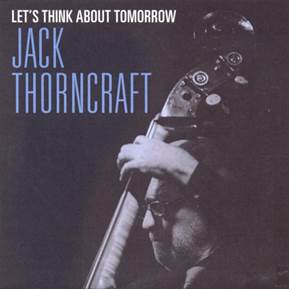 | Jack Thorncraft - Let’s Think About Tomorrow (Independent)
|
If Thorncraft had chosen to rest on his laurels, his legend would have been sufficient to cement his place in the pantheon of Australian jazz legends having been an integral bassist in bands such as the Jazz Co-Op, The Last Straw and Mark Simmonds. Indeed, he has worked with many more. But in the 1980’s Thorncraft chose the far north coast lifestyle to retreat but also to hone his vocal skills. He never stopped playing bass and as a long awaited follow up to his 1998 Aria nominated album Sing Some Play Some he has now released another album where his vocals are at the forefront. There is an honesty and sentimentality in the voice that seems to have defied age and grown more appealing. It occupies a timbre territory somewhere between Bob Dorough and Giacomo Gates but sometimes with hints of Willie Nelson. Of the sixteen choice but under-utilised standards such as Dorsey’s I’m Glad There is You or Berlin’s The Best Thing For You, he includes seven of his own compositions that are every bit as attractive as the standards and blend seamlessly into this context. A case in point would be Goodbye My Friend which hints at R & B with the organ of Steve Russell and the Dave Sanders backbeat. Other talent appearing includes John Hoffman flugel, Jim Kelly guitar and James Cox percussion
   
|
Peter Wockner
|
| Back to Index |
|
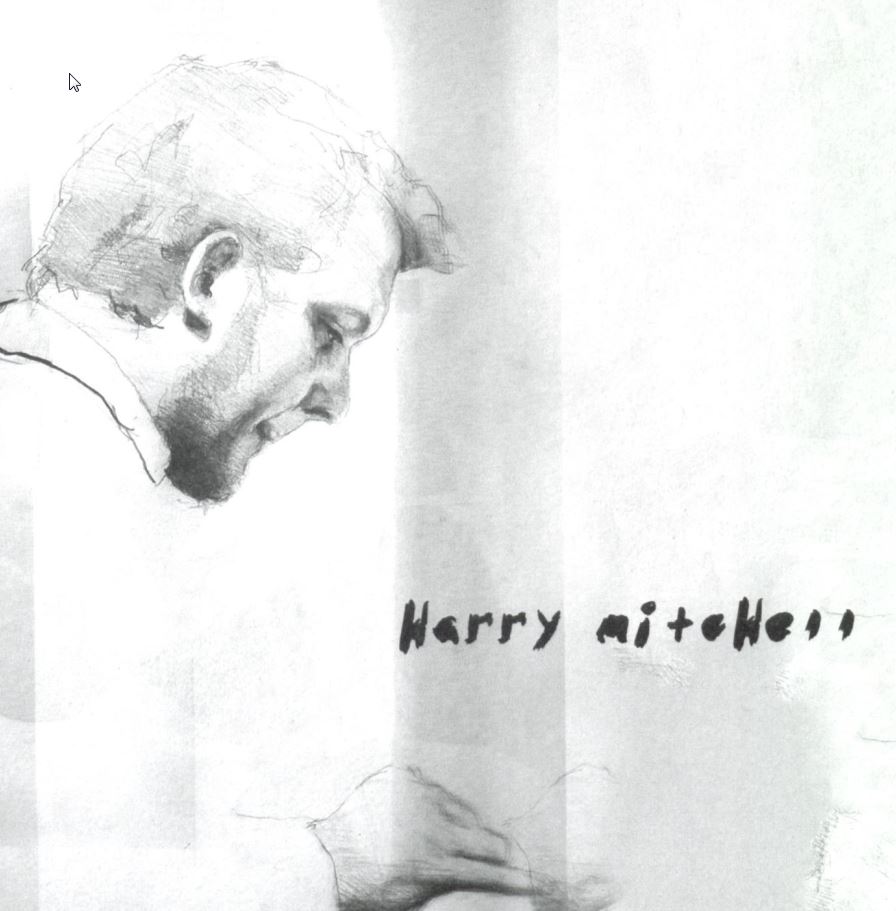 | Harry Mitchell (harrymitchell.net)
|
There are two revelations here for me; Harry Mitchell the jazz pianist and Harry Mitchell the composer. But neither should come as any surprise, as the Perth based pianist has been playing since the age of 8 and jazz since the age of 13. Not that age alone is the barometer for excellence, but with his self titled debut containing six originals and one standard with sidemen such as Jamie Oehlers and Daniel Susnjar, he seems to be playing and composing with advanced maturity way beyond his 22 years. Each piece has an utterly contemporary narrative defined by the talents of each band member and built on the tradition of post hard bop. The group also includes young talents of guitarist Jeremy Thomson and Karl Florisson double bass. Gabba the Hut, a play on the recognisable Star Wars character Jabba the Hutt, is a latin inspired piece starting with intense ensemble work before Oehlers enters on the head in unison with Thomson’s guitar. Then Oehlers and Susnjar break out and trade their own mighty blows before the piano and bass re-enter and Mitchell takes a solo using an amalgam of languages from Hancock to Perez to Rubalcaba. The piece finishes with a series of block chord and drum punctuations before intensifying into a cutting session that one senses could have continued indefinitely not for the fade out; high drama with a sense of fulfilling satisfaction
    
|
Peter Wockner
|
| Back to Index |
|
 | Tom Vincent - Blues in America (Independent release - tomvincent.com.au)
|
Tom Vincent is a jazz pianist, arranger and composer based in Hobart and is one of Australia’s most innovative improvising musicians. Among his career highlights is touring with saxophonist Branford Marsalis as support act and now on his eighth album to date he has finally recorded with him. Along with members from his trio expanded into a quartet, Alf Jackson on drums and Leigh Barker on double bass, he has added ex-patriot now New York bassist Matt Clohesy on two tracks and the legendary saxophonist Marsalis on three. Recorded in two locations in America the album is pure musical harmony delivering much more than just a characteristic piano trio album. The ensemble swings heartily from a blues-based axis that serves as a durable foundation for Vincent’s harmonic and rhythmic forays. The title track featuring Marsalis’s deftly played, technically superb soprano saxophone, is the only original composition by Vincent. It sits comfortably alongside the expertly selected all time classics A Beautiful Friendship, Autumn in New York, Sweet Georgia Brown and a stellar version of Indiana that would put a smile on the face of the great Earl Hines. The recording of Blues in America is a significant achievement for a pianist that has set a high bar in musical achievement long ago and one who is at the top of his game
    
|
Barry O’Sullivan
|
| Back to Index |
|
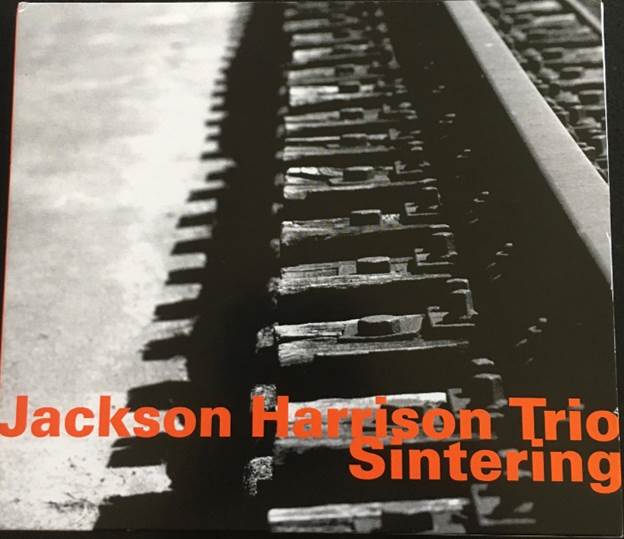 | Jackson Harrison Trio - Sintering (Hatology 723)
|
Following on from the critical acclaim received here, in Europe and the USA of his first album, Land Tides, National Jazz Award winner and Sydney based pianist /composer Jackson Harrison has released a lyrical album of original compositions named after the process of coalescing a powder into a solid by heating it without liquefaction. There's nothing powdery about Jackson’s compositional skills and pianism on this recording rather a strength and cohesion standing out as the backbone with the linking of composed pieces and collective improvisations. There are some electrifyingly high energy moments where the album becomes delightfully effervescent like on the track Preludial and on others, Charcoal Choral, River Dolphin and Day For Night, where the music is deceptively simple and out of this charming, relaxed atmosphere Harrison emerges with a lyrical soliloquy that's complex, melodic and fluid. The sophisticated three-way conversation of Harrison’s Trio is mesmerising. Ben Waples' bass work, both Arco and Pizzicato, is outstanding as is his percussionist brother James’s subtle touch guiding the group through its more involved passages. This is one piano trio that effortlessly establishes a signature sound by virtue of the very strong musical personalities involved
   
|
Barry O’Sullivan
|
| Back to Index |
|
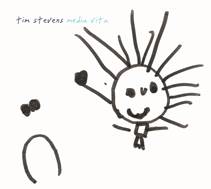 | Tim Stevens - Media Vita (Rufus Records RF128)
|
As Cuban pianist Alfredo Rodriguez recently reminded us, playing solo piano is a conversation with yourself. At 46, Tim Stevens is indeed media vita or in the midst of his life and career releasing his fourth solo piano album of which he says is “probably the most immediately accessible”. Stevens is one of the few Australian pianists who has genuinely forged a distinctively original solo style. Underpinned by his classical foundations, Stevens continues to challenge the listener with his harmonic approach. In 2016 Stevens went about writing a tune on a daily basis and the result is his 2016 distilled into 56 captivating minutes. The happy face/sad face illustrations on the album cover by his toddler son Oliver is a tender reflection of the 12 tunes used as vivid emotionally charged improvisational vehicles. Pseudepigrapha written on the 11th April, uses his left hand to create Cuban-like rhythms and chord progressions that provide bountiful opportunities for his right hand to react against using jaunty yet graceful leaping and plunging figures. 2016 was a good year
   
|
Peter Wockner
|
| Back to Index |
|
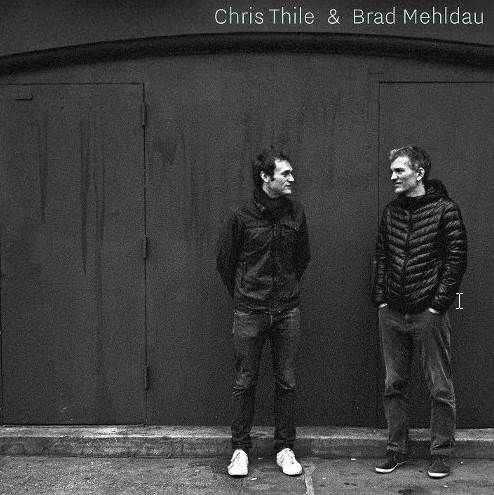 | Chris Thile and Brad Mehldau - Chris Thile and Brad Mehldau (Nonesuch Records 2017)
|
Chris Thile and Brad Mehldau come from different worlds but the same species. Thile is a progressive-bluegrass pacesetter, Mehldau is the most influential jazz pianist of the last 20 years.The mandolin and piano pairing makes for a beautifully eclectic experience on this hour-long set, spread over two CDs .These Nonesuch Records label mates are two of the most acclaimed current generation musicians in America. Both have separately played in Australia in 2016 – Chris with Punch Brothers in August, and Brad in a duo concert with Joshua Redman as recently as October. At the end of 2015, they played a two-night stand at New York City’s Bowery Ballroom before going into the studio to record this mix of covers and original songs. The meeting of the two masters of their respective realms is a spine-tingling triumph – a honky, gutsy, jaunty, darkly witty new musical fusion that is suitably strange yet strangely familiar. The eleven songs dig down into the roots of American music, touching the common ancestry of jazz and country. Alongside some excellent originals including the co-written The Old Shade Tree and the classically inspired Noise Machine are the edgy readings of songs by Bob Dylan, Don’t Think Twice It’s Alright and the lilting wistful evocative reworking of Joni Mitchell’s Marcie. This is a musical partnership that will definitely endure
   
|
Barry O’Sullivan
|
| Back to Index |
|
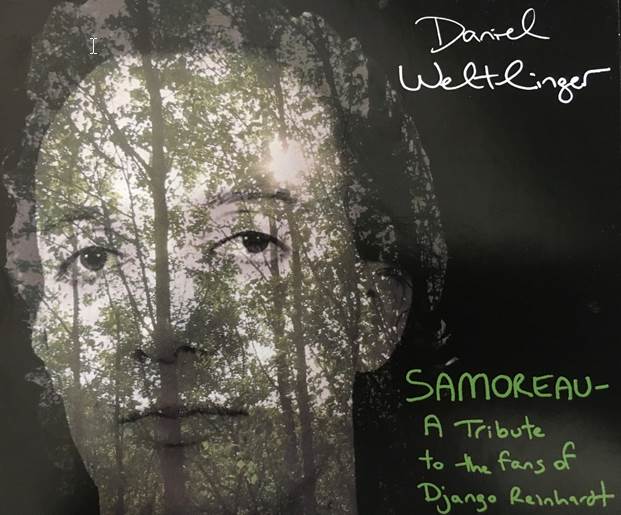 | Daniel Weltlinger - Samoreau. A Tribute to the fans of Django Reinhardt.(DMG-Rectify Records 8179.2)
|
Sydney born, Berlin based violinist and composer Daniel Weltlinger concludes his trilogy of recordings with his latest release of Samoreau. The album follows his critically acclaimed Souvenirs (2011),and Koblenz (2014) and completes his trilogy dedicated the legendary gypsy guitarist, Django Reinhardt, who in the 1930’s pioneered the musical style Manouche which still resonates with audiences around the world today. Weltlinger shines on his violin on the eleven originals and is joined by Django’s grand nephew, acclaimed guitarist Lulo Reinhardt as well as four of Lulo’s nephews who are also guitarists. Winfried Schuld plays accordion on two tracks and piano on one with superb finesse adding to the guitarists essential Eastern European flourish with plenty of Gypsy swing. The album is named after the town near where the annual Festival Django Reinhardt is celebrated each year at Samois-sur-Seine, France. The festival began as a one night concert in 1968 and expanded to a week-long event in 1983.Weltlinger first attended the event in 2004 and formed a close bond with many of the people from across Europe that attend the Festival. Some of the outstanding tracks are Waterlilies, a direct allusion to the Django composition Nympheas, Samois, a tribute to the legendary festival town and Ghosts, which alludes to wars and conflicts both past and present. Another track La Femme Sophistiquee features Lulo and Weltlinger at their finest and showcases them as masters of their craft and instruments painted with the shades of the all time greats, Stephane Grappelli and Django Reinhardt
   
|
Barry O’Sullivan
|
| Back to Index |
|
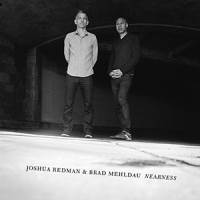 | Joshua Redman and Brad Mehldau - Nearness (Nonesuch Records 7559-79456-0 )
|
Released to coincide with their world tour of 2016 and their performances at various venues in Australia, this perfect musical pairing of two of the most prominent and highly respected improvising virtuoso performers in Jazz today, is in fact their first duo recording. Brad Mehldau first came to prominence as a member Joshua Redman's quartet in the 1990s before becoming a bandleader himself. The pair reunited in 2010 when Redman was featured on Mehldau's album Highway Rider. In 2013, Mehldau was featured as a performer and producer on Redman's recording Walking Shadows.Nearness features live performances captured during a previous 2011 European tour, comprising of three original tracks and three familiar jazz standards. There is a meticulousness to the continuous process of abstraction that Mehldau applies to a tune with a certain density of information. This can be followed by a stripped down emotionally direct interpretation of a ballad that comes from nowhere and knocks the wind out of you with its simplicity and clarity. Highlights of the recording are a sixteen minute rendition of Hoagy Carmichael’s The Nearness of You which displays Mehldau’s harmonic skills with a particularly skilful unaccompanied break from Redman on tenor sax. Another highlight is their interpretation of the Mehldau composition Old West with Redman’s dexterity and lyricism on soprano saxophone a sheer joy to listen to. On all of the tracks there are musically intelligent conversations between two stellar artists with Redman chasing the tune while Mehldau deconstructs the harmony and rhythm. As performers their virtuosity is unparalleled and highly recommended listening.
    
|
Barry O’Sullivan
|
| Back to Index |
|
| Archives 2016 |
| Archives 2015 |
| Archives 2014 |
| Archives 2013 |
| Archives 2012 |
| Archives 2011 |
| Archives 2002-2010 |

























